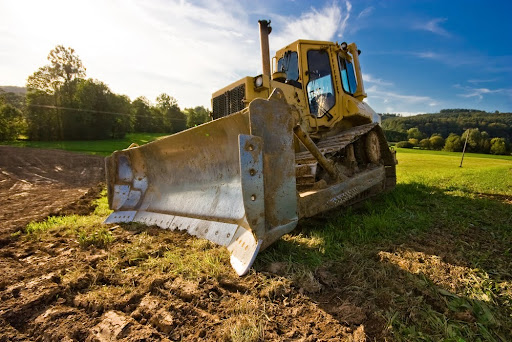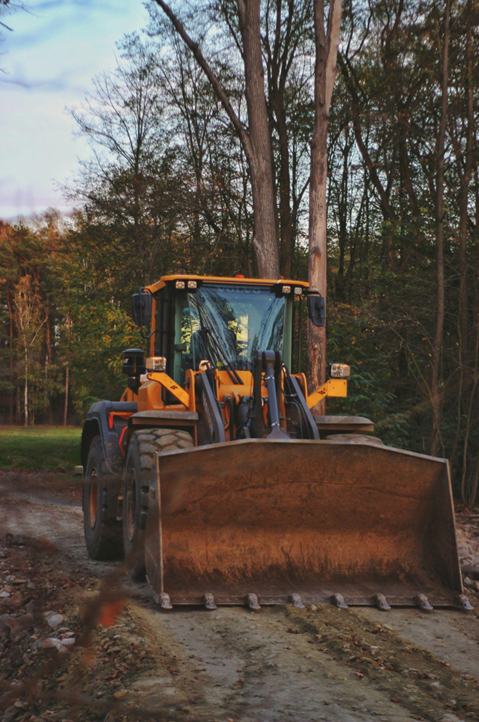How Much Does a Tractor Cost?
How Much Is My Tractor Worth?
Best Tractors for Small Farms
How Much Does a Tractor Tire Weigh?
Most Useful Tractor Implements
Most Popular Tractor Brands
What are Hay Balers?
How Many Bales of Hay Per Acre Can You Produce?
Tractors & Road Safety
What Does PTO Stand for on a Tractor? And How Does It Work?
Compact Vs. Utility Tractors: Which Is Right for Your Farm?
Best Tractor Models for Small to Medium Farms
How To Operate a Skid Steer
Skid Steer Attachments
Manure Spreaders
Grapple Buckets
How Do Combine Harvesters Work?
Autonomous Tractors
What is an Excavator?
How much does a Forklift Cost?
Different Types Of Cattle Barns
How Is Hemp Harvested?
How Does a Concrete Crusher Work? Understanding the Role and Mechanisms of Concrete Crushers
A Beginner’s Guide to Online Farm Equipment Auctions
How Online Farm Auctions Are Transforming the Ag Industry
Corn Harvesting: Where Is Corn Grown in the U.S.?
How to Write Off Farm Equipment on Taxes
Bale Beds for Sale New & Used
Guide to Tillage: What Is Tillage Equipment & Its Process?
Evolution of the Bulldozer
Bulldozers in Construction
Selling Used Farm Equipment
Understanding Commodity Price Trends
Top Tips for Successful Bidding in Online Farm Equipment Auctions
Most Efficient Corn Harvesting
Top Seeders for No-Till Farming
Square vs Round Balers
The Evolution of the Bulldozer and Its Importance for Farmers Today

Bulldozers have transformed agriculture since their invention in the early 20th century. Farmers rely on bulldozers for tasks like clearing land, managing soil, and emergency cleanup after storms. By exploring the history and advancements of bulldozers, farmers can better understand their value and make informed buying decisions.
How Farmers Use Bulldozers Today
Since their invention in 1923, bulldozers—commonly called dozers—have become indispensable farm tools. Key agricultural uses include:
- Clearing land by removing trees, stumps, and brush
- Preparing ground for buildings and infrastructure
- Managing soil quality and irrigation
- Removing snow to maintain farm access
- Clearing storm debris
But how did bulldozers evolve into such versatile agricultural machines? Here’s a brief look at their history.
The Origins of the Bulldozer
Who Invented the Bulldozer?
The bulldozer was officially created in 1923 by Americans James Cummings and J. Earl McLeod in Kansas. They developed a large blade attachment for tractors that could push heavy loads of soil, sand, and debris. However, earlier innovations contributed significantly:
- Benjamin Holt (1904) introduced crawler tracks to tractors, improving movement across muddy fields. This innovation became foundational to bulldozers and led to the founding of Caterpillar Tractor Co.
- Richard Hornsby & Sons (early 1900s) developed crawler tractors that influenced modern bulldozer tracks and inspired tank designs during World War I.
These earlier inventions set the stage for the practical bulldozer attachment patented by Cummings and McLeod.
Major Technological Advancements in Bulldozers
Modern bulldozers have come a long way since their early designs. Farmers benefit from several key advancements:
- Hydraulic Systems (1949): Introduced by Caterpillar, hydraulic-powered blades improved accuracy, lifting capacity, and reliability.
- Power Shift Transmissions: Allowed operators to shift gears easily without stopping, significantly boosting efficiency on farms.
- Engine Improvements: Modern engines deliver more power, improved fuel efficiency, and comply with emissions standards, making bulldozers environmentally friendlier.
- Comfortable Operator Cabs: Upgraded cabins now feature climate control, ergonomic seating, and noise insulation to enhance operator safety and productivity.
- GPS and Precision Technology: Integrated GPS systems enable precise grading and soil management with minimal manual intervention.
- Enhanced Durability and Maintenance: Advances in materials and undercarriage design have made bulldozers more durable and reduced maintenance requirements.
- Electronic Alert Systems: Monitoring systems now alert farmers to maintenance needs and potential mechanical issues.
- Remote Control and Automation: Newer models offer remote operation, allowing safe use in hazardous conditions.
Popular Bulldozer Brands for Agriculture

Photo by Marius Le on Unsplash
Several manufacturers dominate the bulldozer market, each known for unique strengths that appeal to farmers:
- Caterpillar (since 1945): Known for durability, cutting-edge technology, operator comfort, and strong resale value.
- John Deere (since 1958): Offers quieter, ergonomic cabs, advanced features like SmartGrade technology, and easier maintenance access.
- Komatsu (since 1931): Praised for durable undercarriages, precise grading controls, and enhanced operator comfort.
Choosing the Right Bulldozer for Your Farm
Before buying a bulldozer, clearly define how you’ll use it. Here’s a simple guide matching farm tasks to bulldozer features:
| Agricultural Task | Size | Blade Type | Power Needed | Popular Brands | Undercarriage Design |
|---|---|---|---|---|---|
| Land Clearing | Medium-Large | U-blade | High | Caterpillar, Komatsu | Low-ground pressure (LGP) |
| Building Roads | Medium | Straight | Moderate-High | John Deere, CAT | Standard |
| Earth Moving | Large | S-blade | High | CAT, Komatsu | Standard or LGP |
| Building Terraces | Medium | Straight | Moderate | John Deere, Case | High-track (HT) |
| Demolition | Medium-Large | Straight | High | CAT, Komatsu | Standard |
| Heavy Lifting/Shifting | Large | U-blade | High | Volvo, Liebherr | LGP |
| Snow Removal | Small-Medium | Straight | Low-Moderate | Bobcat, CAT | LGP or HT |
| Soil Compaction | Small-Medium | Straight | Moderate | CAT, Volvo | LGP |
| Ripper Operations | Medium-Large | U-blade | High | Komatsu, CAT | HT |
| Harvest Residue Management | Small-Medium | Straight | Low-Moderate | John Deere, New Holland | Standard |
Financial Considerations When Buying a Bulldozer
Buying a bulldozer is a major investment. Evaluate these factors carefully:
- Frequency of Use: Will owning a bulldozer be cost-effective for your farm’s needs, or should you consider renting?
- Budget: Identify your spending limits and factor in potential resale value. Certain brands retain value better than others.
- New vs. Used Equipment: Used bulldozers can save significant costs. Research online listings, dealers, and local auctions.
- Brand Reputation: Reliable brands ensure easier maintenance, parts availability, and resale potential.
- Safety Training: Ensure operators are trained in safety protocols, including rollover prevention, seat belt use, and visibility guidelines.
- Environmental Impact: Some bulldozers minimize soil disruption and wildlife impact—consider these features for environmentally sensitive farms.
Final Thoughts on Bulldozer History and Use Today
Understanding bulldozer history helps farmers appreciate the equipment’s value and practical benefits. Modern bulldozers combine durability, efficiency, and innovative technology to improve productivity and reduce workload on farms.
Ready to explore bulldozers for your farm? Check out the wide selection of dozers available today at Fastline!